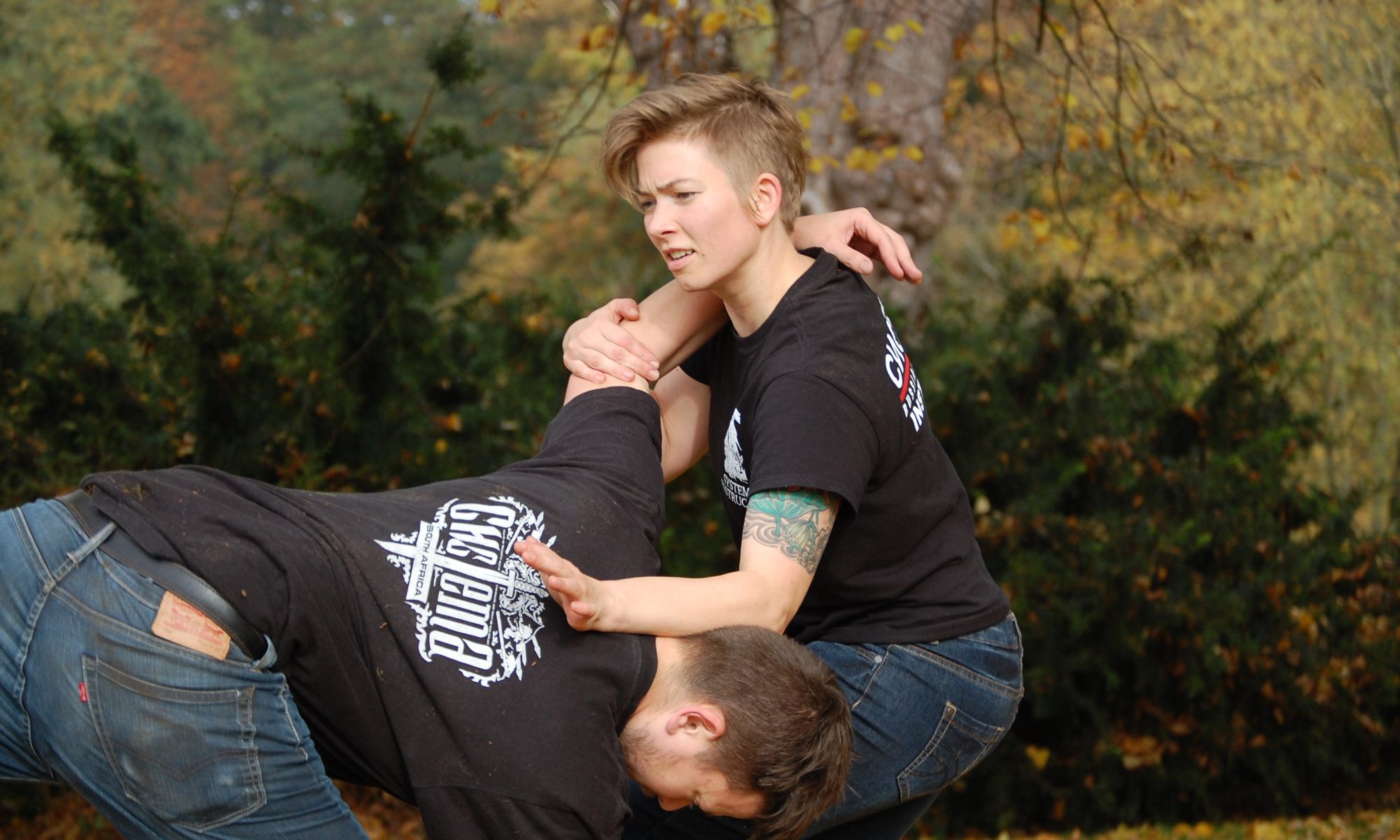“Obey gravity, it is the law”
For me this seminar in the woods of Drenthe was all about working with the centre of gravity, helped enormously by great food, prepared by Marga and Odile, and by the company of a group of dedicated practitioners, from all over the country, and abroad.
In previous seminars Arend taught, explained and showed this work, but it somehow eluded me. So it remained a rather abstract subject I could not use very well in training or daily life. Except for walking that is. Except for walking. Because, as Arend explained: you cannot go anywhere if you don’t move your centre of gravity far enough in the direction you want to go, or when you try to stay balanced all the time.
So this is what we did: we walked, bringing our centre of gravity forward, learning how to move from there. We walked while holding dumbbells, and punched our friends with them, allowing the weight of the dumbbell to do its job. We walked while holding shovels, moving around by bringing the shovel in the desired direction.
This may sounds rather abstract, but the thing is: if you know how to put your weight in your shovel, you can start put your weight in other things, like knives or fists. So now your blade becomes ‘alive’, and your fist feels heavy.
It also means that you learn how to start your movement with fist or weapon, instead of other parts of your body, like your feet, your hips, or – shudder – with your shoulders. George Silver (ca. 1550-1620) called this principle ‘moving in true times’, and it is essential for any kind of effective weapons work.
You also start to see how you are very often stabilizing the other person, by adding your own weight (or ‘density’, or ‘attention’) to the other person’s centre of gravity, either in a psychological or physical sense. You realise that if you try to stay balanced all the time, (usually by moving forward and backward at the same time), you might give the other person ‘support’, something to lean on, preventing him from falling down.
So this is what we did mainly on friday and saturday. Working with these concepts, trying to apply them while breaking structure, escaping from grabs, doing teamwork and working with punches and kicks.
Sunday was weapons day. We worked with shovels, sticks and knifes, and learned how to make use of the environment. The previous lessons deepened the weapons work, which apparently is not just about slashing and stabbing, but is also about using deception, about trapping attention, while cutting or stabbing at the same time.
Because, when you bring weight (or ‘density’) to your weapons, tools, or fists, something happens with the attention of your opponent. And you can learn how to use this. Sounds like fun to me.
Instructor and organizer: Arend Dubbelboer
